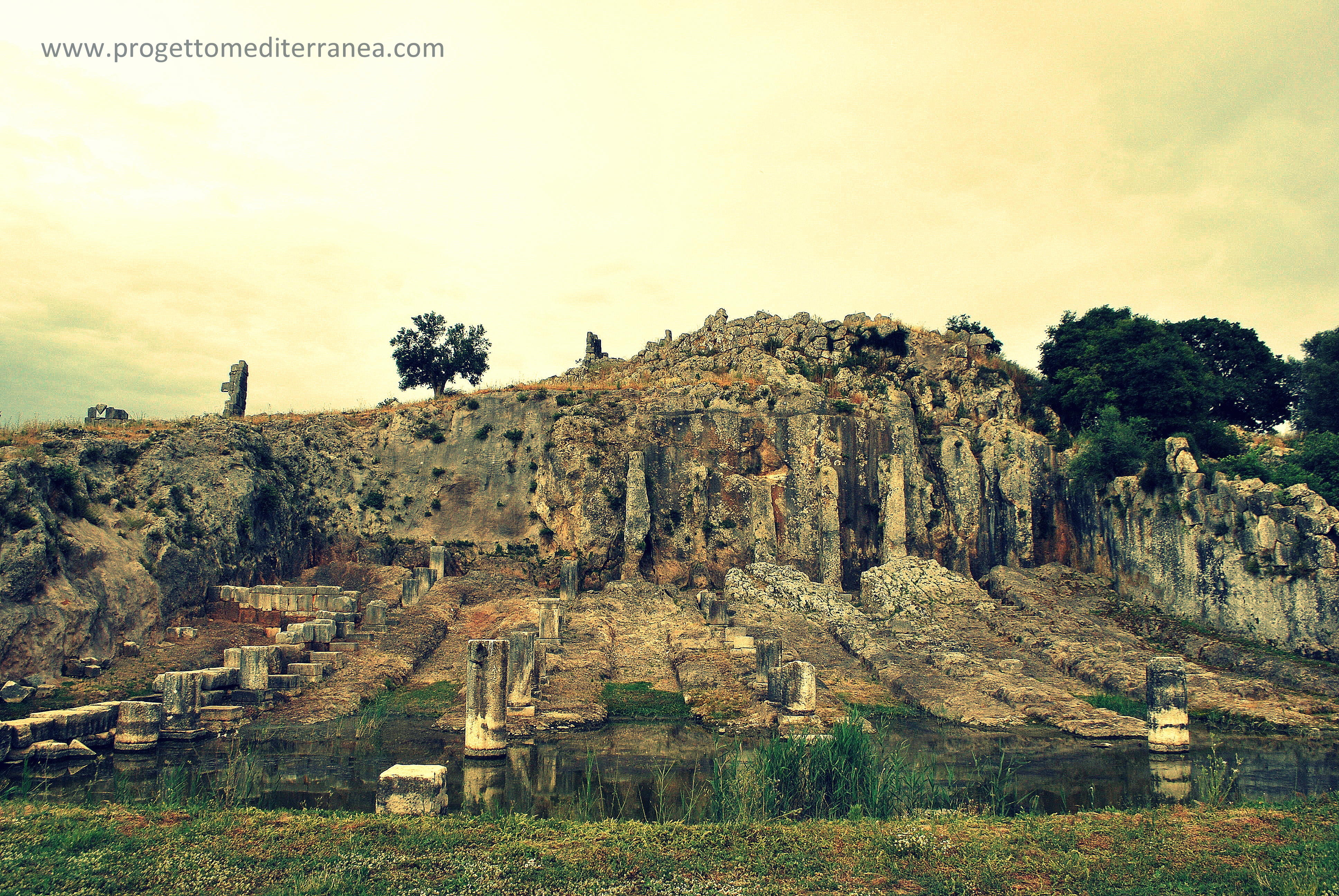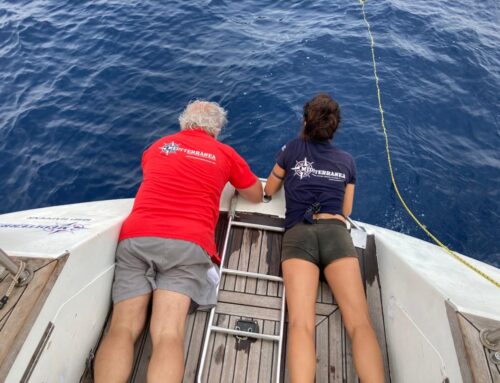 In the area of the Acheloos River estuary, on the fertile plain formed by the river’s silt west of Mesolongi and near the village of Katochi, is the archaeological site of Oiniades 38° 24.340 N – 21° 11.935 E . The city was located on a hill now covered by impressive oak trees and the landscape is significantly different than it was during antiquity when the city was an important port. The area is locally known as Trikardokastro, due to the fortification of the ancient acropolis, where a 5th-century BC tower still survives. Nevertheless, excavations have brought to light port and shipbuilding installations, buildings in the agora, public baths and a 4th-century BC theatre, all of which make the open site well worth a visit.
In the area of the Acheloos River estuary, on the fertile plain formed by the river’s silt west of Mesolongi and near the village of Katochi, is the archaeological site of Oiniades 38° 24.340 N – 21° 11.935 E . The city was located on a hill now covered by impressive oak trees and the landscape is significantly different than it was during antiquity when the city was an important port. The area is locally known as Trikardokastro, due to the fortification of the ancient acropolis, where a 5th-century BC tower still survives. Nevertheless, excavations have brought to light port and shipbuilding installations, buildings in the agora, public baths and a 4th-century BC theatre, all of which make the open site well worth a visit.
And it is the remains of the shipyard that intrigue the crew of the Mediterranean, taking advantage of the upcoming storm, decides to pay a visit to the site, May 22, 2013, while Mediterranean remains steadfast to its mooring in the port of Messolonghi 38 ° 21,670 N – 21 ° 25,065 E and the clouds appear on the horizonThe ship shed complex lies at the southwestern part of the arbour. This is a large rectangular construction carved in the bedrock, used for pulling out and repairing ships. 19th century travellers had noticed the monument but it was Powell that first excavated here, in 1900. the excavation was resumed in 1992 by the Greek archaeological service and the ship sheds were fully revealed in 1995.
The complex is a rectangular shaped structure measuring 41×47 m. its eastern side is almost entirely vertically carved in the bedrock (11m high) and the northern and southern ones are partly carved and partly built with polygonal masonry. The fourth western side was built with limestone blocks creating an entrance with multiple openings at the monument’s facade. Eleven semi pillars (7 m high ) had been carved on the eastern side’s rock face, created twelve niches that corresponded to the roof supporting colonnades and the ramps on which the ships were pulled out.
The ship sheds were roofed with an undulating roof, supported by five colonnades of 17 columns each and by the sidewalls of the structure. The building comprised six ramps with floor inclining toward the sea.
The monuments dates to the 4th century BC and many of its architectural features are similar to those of the ship sheds at Zea, Piraeus. Its use ceased after the 3rd century BC. A little later than northernmost ramp was cleaned of all the debris that had accumulated there and was walled using material from the collapsed building to be reused either as an anchorage or as a repair shop for small boats.
This is Mediterranean sea too.





Leave A Comment